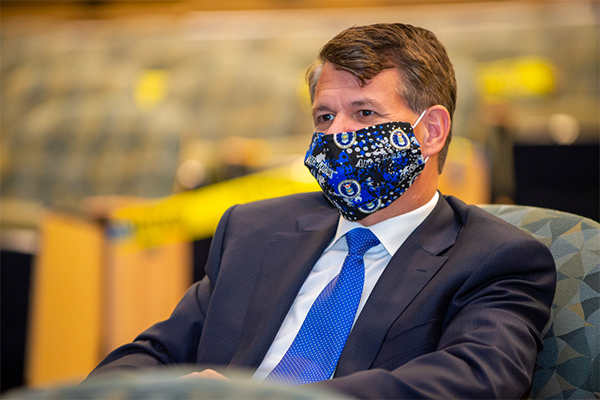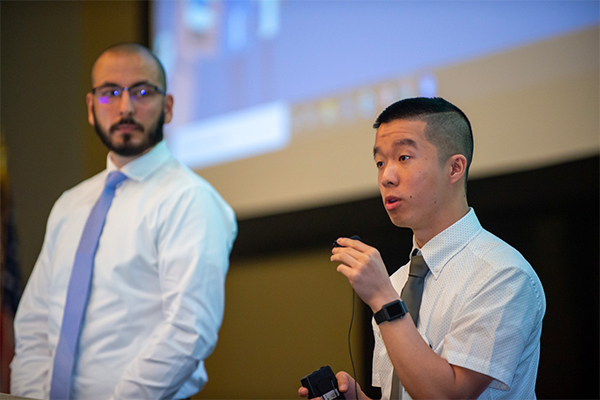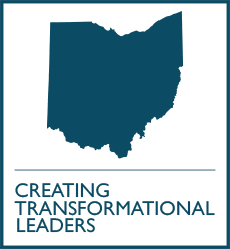Aug 6

MedTech Pitch Day at NEOMED Delivered Two Ways, Due to COVID-19
For 13 future entrepreneurs Friday, July 24 was a big day: Pitch Day, to be exact. As participants in the Burton D. Morgan Future MedTech Entrepreneur Internship program offered through the REDIzone® business incubator at Northeast Ohio Medical University, this multi-disciplinary group of law, business, pharmacy and medicine students from five regional institutions completed six weeks of learning, reviewing and pitching medical innovation. After deep-dive discussions with successful medtech entrepreneurs and researching and reviewing regional healthcare company pitches for investment funds, the students were primed to apply what they learned to their own pitches, centered around recent NEOMED technologies and their pathways for market entry.
A dozen interns each received a $3,000 stipend, with additional unpaid externships offered to accommodate the demand among meritorious applicants. This was the second summer for this unique internship program designed and executed by Elliot Reed, executive director of the REDIzone business incubator. It is expected that this internship program will inform the creation of a graduate certificate in entrepreneurship and innovation in the future.
After weeks of virtual instruction, the students requested that they be permitted to present in person for their final, culminating experience. Accommodations were made for both live presentations on campus at Watanakunakorn Auditorium and via livestream. Proper social distancing, masks and hand sanitizer were used during the live presentations, consistent with NEOMED’s policies. John T. Langell, M.D., Ph.D., M.P.H., M.B.A., who founded the Center for Medical Innovation at the University of Utah before joining NEOMED as its president in 2019, delivered the opening remarks, emphasizing the driving force of change that innovators and entrepreneurs bring to improve the lives of patients.
Dr. Langell also assessed each pitch and delivered the first of several probing questions asked of individual teams to support their market entry propositions.
Mary McHenry, a program officer at the Burton D. Morgan Foundation in Hudson, Ohio, participated virtually with introductory remarks and compliments for the success of the program in exposing students to the due diligence, research, and pitching necessary to bring medical innovation to market.
Making their case
Each team presented their research findings around their chosen technology, including identifying and distinguishing competitors and understanding the realistic market opportunity of their innovation. They explained the strength of the intellectual property protection in place or that they planned to pursue. And just as would be required before a group of actual investors to de-risk a potential investment, the teams included the regulatory pathways, pricing and financial projections to support their business strategies.
For example, the team of Luke Elbert, Pharm D., a J.D. candidate at the University of Akron), and Tim Nagy (an M.B.A. candidate at Cleveland State University), presented the SACCAVI Autogenous Bone Graft Filter, a bone growth technology developed by Fayez Safadi, Ph.D., a faculty member and director of the Musculoskeletal Research focus area at NEOMED. They emphasized the unmet clinical need present with existing technologies that required lengthy healing time following spinal infusions and other undesirable results: two competitive technologies actually caused too much bone growth, and a third required the patient to have additional surgery.
Mackenzie Wilson, (a second-year student in the College of Medicine), Michael DiDomenico (a J.D. candidate at Cleveland State University) and Larissa Melnyk (a third-year student in the College of Pharmacy) began their presentation of a “Diagnostic Biomarker for Diabetes” with a case study of a man with diabetes to build their argument for this new biomarker developed by NEOMED faculty and researcher Takhar Kasumov, who holds a Ph.D. in organic synthesis.
Many people experience cardiovascular problems triggered by diabetes, and current medications are not always effective or safe for all patients, explained Wilson. Early detection of pre-diabetes is critical to preventing secondary health issues because by the time patients show symptoms of full diabetes, secondary damage (such as cardiovascular disease) has already been done. The goal of the biomarker is to identify diabetes early and intervene with a personalized treatment plan to prevent damaging secondary health issues.

Dr. Langell praised the team for “a really outstanding presentation.”
“You were an exciting team to mentor,” echoed Elliot Reed, congratulating them for exceptional teamwork.
Thinking Differently about MedTech
Not all technologies presented came from a scientific laboratory. One was derived from an unmet need in healthcare education.
Maher Abbo (a second-year College of Pharmacy student) and Alex Tang (a second-year College of Medicine student) presented the “Health Education Outbreak Identification Curriculum,” designed by NEOMED faculty member Amy Lee, M.D., M.P.H., M.B.A., program director for the Consortium of Eastern Ohio Master of Public Health program. The curriculum trains medicine and pharmacy students to work collaboratively when there is an outbreak (such as a foodborne illness) to synthesize and disseminate accurate science-based information.
Current educational curriculum lacks methods for increasing public awareness of disease outbreaks, explained the presenters. Through interactive exercises, students would form teams to investigate real-time information (or misinformation) circulating quickly on social media, analyze it, and provide science-based guidance to the public and media.
Watch the REDIzone pages of NEOMED’s website for updates on news and opportunities.


